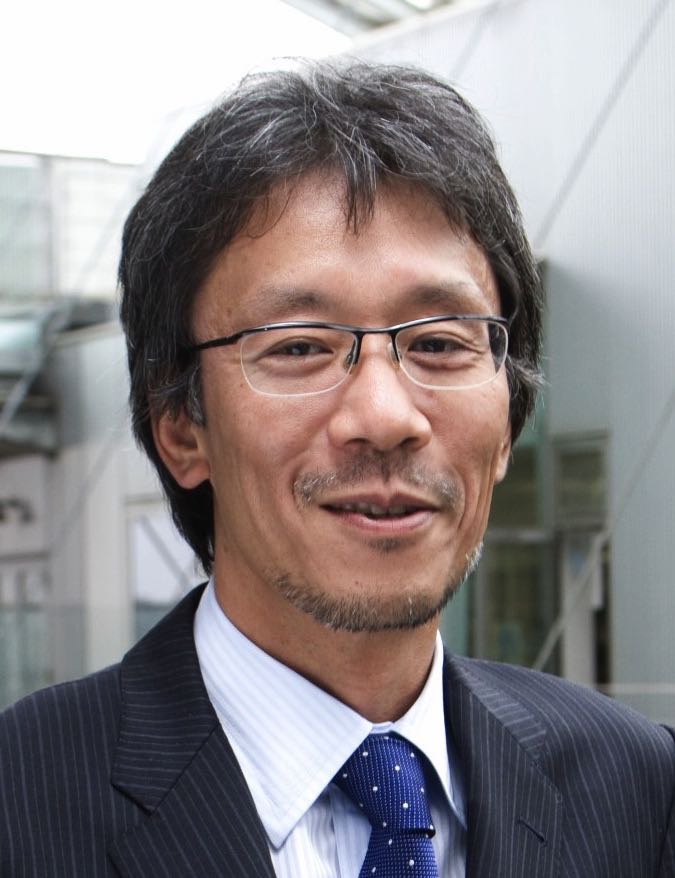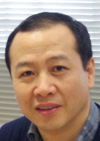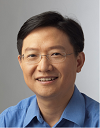Co-Located Conference AgendasGenomics Research Asia | Screening Asia |  Other Track Agendas Other Track AgendasLab-on-a-Chip Asia Track A | Lab-on-a-Chip Asia Track B |

Tuesday, 12 November 201308:00 | Registration | |
Plenary Session |
| | |
Chair: Charles Yang Chun, Associate Professor, Nanyang Technological University |
| | 08:30 |  | Conference Chair Welcome Speech: Design and Manufacturing of Microfluidics Devices
Zhiping Wang, Director, Singapore Institute Of Manufacturing Technology A''STAR, Singapore
|
| 09:15 |  | Keynote Presentation Lab-on-a-Chip Technologies – Pushing the Limit of Understanding
Teruo Fujii, Professor, University Of Tokyo, Japan
Lab-on-a-Chip or microfluidics technologies enable us to achieve much higher resolution in space and time for our experiments. By applying these technologies, we could push the limit of understanding in various research fields including biological and environmental sciences. |
| 10:00 | Coffee & Networking in Exhibition Hall | |
Session 1B |
| | |
Chair: Haiqing Gong, Director & Founder, Star Array Pte Ltd |
| | 10:30 | Whole Cell Sensing System for Environmental Monitoring
Nico Rooij, Professor, Ecole Polytechnique Federale de Lausanne, Switzerland
We present a whole cell analysis system for detection of toxins in the environment. In this system, the metabolic response of living cells to toxic compounds in the environmental water samples is the assessment tool for sample evaluation. | 11:00 | Microfluidic Synthesis of Structured Functional Materials - From Plasmonic Nanoparticles to Organic Microcrystals
Saif Khan, Associate Professor, Chemical and Biomolecular Engineering, National University of Singapore, Singapore
Microfluidics is a tremendously promising technology for chemical and materials synthesis due to the inherent, remarkable level of control of physical transport phenomena and their interactions with chemical reactions. In this talk I will demonstrate microfluidic methods for the exquisitely controlled synthesis of two very different materials classes – metallodielectric (silica-gold) particles with tunable plasmonic properties and organic microcrystals relevant for pharmaceutical drug formulations. | 11:30 | Protein Immobilization and Assay Development Issues
Jens Sobek, Research Scientist, University of Zurich, Switzerland
Assay development often suffers from artifacts of unknown origin. We present results of a microarray study showing the influence of drop dring on immobilization of oligonucleotides and proteins, and its impact on assay performance. | 11:50 | Cotton Fabrics as a Low-cost Effective Platform for Point of Care Devices: from Lab-on-a-Chip to Lab-in-Cloth
Dedy Wicaksono, Senior Lecturer, Universiti Teknologi Malaysia, Malaysia
The work proposes the use of cotton fabrics as a low-cost point of care device. Two types of cotton fabrics-based devices are made: colorimetric and electrochemical. Performance is discussed along with comparison with already popular paper-based microfluidic devices. | 12:10 | Lunch & Networking in Exhibition Hall | 13:15 | Poster Viewing Session | |
Plenary Session |
| | |
Chair: Chwee Teck Lim, Principal Investigator/Professor, National University of Singapore |
| | 14:00 |  | Keynote Presentation Microarray and Microfluidic Chips for Preventive and Personalized Medicine
Jing Cheng, CEO, CapitalBio, China
It briefly introduces a series of innovative microarray and microfluidic chips applied in the field of clinical molecular diagnostics for preventive and personalized medicine. |
| 14:45 |  | Keynote Presentation Using Phononic Crystals to Shape Complex Fluid Flows
Jon Cooper, Professor, University of Glasgow, United Kingdom
We have developed phononic crystals that shape acoustic fields as "acoustic holograms", enabling the control of fluid flows. We demonstrate the technology in biomedical diagnostics to enable PCR, cell lysis and sample manipulation - with applications in rapid diagnostic tests. |
| 15:30 | Coffee & Networking in Exhibition Hall | |
Session 2B |
| | |
Chair: Zhenfeng Wang, Senior Scientist, SIMTech |
| | 16:00 | Automated Droplet-Based Microfluidic Analysis and Screening with Sequential Operation Droplet Array System
Qun Fang, Professor, Zhejiang University, China
An automated droplet-based microfluidic and screening system was developed with low sample/reagent consumptions in the nanoliter to picoliter range, and it was applied in single cell analysis, drug screening and protein crystallization screening. | 16:30 | Droplet-in-Oil Microfluidics for the Lab-on-a-Disc Platform
Ho Pui Ho, Professor, The Chinese University of Hong Kong, Hong Kong
We report the use of droplet-in-oil strategy in a lab-on-a-disc (LOAD) device platform. While surface tension can be removed completely, actuation force depends entirely on spinning speed and density difference. Droplet manipulation as required by common bioassays will be discussed. | 17:00 | Acoustical Microfluidics for Sorting and Control in Droplet Fluidics
Thomas Franke, Professor, University of Augsburg, Germany
We describe a versatile microfluidic fluorescence-activated cell sorter that uses acoustic actuation to sort cells or drops at ultra-high rates. Our acoustic sorter combines the advantages of traditional fluorescence-activated cell (FACS) and droplet sorting (FADS) and is applicable to a multitude of objects including cells, particles and drops. | 17:20 | Plasmonic droplets for High Throughput Sensing
Joshua Edel, Professor, Imperial College London, United Kingdom
Novel strategies in high throughput sensing using micronscale droplets will be presented. | 17:40 | Close of Day One |
Wednesday, 13 November 2013 |
Plenary Session |
| | |
Chair: Zhiping Wang, Director, SIMTech Microfluidics Foundry, Singapore Institute of Manufacturing Technology |
| | 08:30 |  | Keynote Presentation Microfluidic Platforms, Microfluidic Apps and Microfluidic Foundry Services
Roland Zengerle, Professor, University of Freiburg, Germany
The talk promotes three major issues that enable to speed up Lab-on-a-Chip development and reduce time to market: i) the use of microfluidic platforms, ii) the development of Microfluidic Apps for existing lab instruments and iii) the offer of microfluidic design & foundry services. Various examples based on the use of centrifugal microfluidics platforms will be given to illustrate the impact of those issues especially for point-of-care applications. |
| 09:15 |  | Keynote Presentation Research into the Use of Optofluidics to Manipulate Light and Liquid
Ai Qun Liu, Professor, Nanyang Technological University, Singapore
There is significant research in the field of manipulation and sorting of small size particles and molecules with dimensions of tens to hundreds of nanometers in a microfluidic chip. Opto-fluidic-force aims to manipulate light and fluid at micro- and nano-scale and exploit their interaction to create highly versatile devices that have significant scientific interests in many areas. The novelties of the integrated opto-fluidic-force are two-fold. First, fluids can be used to carry substances for analysis in highly sensitive optical micro-devices. Second, fluids can also be exploited to control light, making them tunable, reconfigurable and adaptive. It is a new breakthrough research area that provides new solutions and opportunities for a wide range of traditional micro-/nano-particle and molecule sorting, manipulation and detection by using opto-fluidic-force manipulation. Also, this new innovation allows scientists and researchers to tackle many classical problems with new tools and new research ideas. In this talk, the state-of-the-art of opto-fluidic-force research is reviewed with breakthrough innovations in nano-particle and molecule sorting, manipulation and detection etc. and may lead to new applications in a single molecule sorting, maipulation and imaging. |
| 10:00 | Coffee & Networking in Exhibition Hall | |
Session 3B |
| | |
Chair: Hideaki Hisamoto, Professor, Osaka Prefecture University |
| | 10:30 | Development of a Pocket DNA Diagnostic Device
Jonathan O'Halloran, Chief Scientific Officer/Co Founder, QuantuMDx Group Ltd, United Kingdom
The era of drug resistance infectious disease is upon us and we need tools to combat this emerging threat. Jonathan will talk about the development of a novel handheld multiplex, sample to result MDx platform that is capable of providing complex MDx in under 15 minutes. | 11:00 | Dielectrophoresis-based Manipulation, Separation and Detection of Micro/Bio-particles
Kun Shyong Chow, Research Fellow, DHI-NTU , Singapore
This presentation aims to demonstrate the capability of dielectrophoresis in separating micro-particles as well as detecting the water pathogen in the lab-on-a-chip system. Two designs of microfluidic system were proposed: A 3D paired microelectrode system to accumulate and separate different size of particles and a microfluidic combined with impedance system to detect the water pathogen.
| 11:30 | Extraction of Multiple Pure Biomolecules using a Microfluidic System
Ruige Wu, Research Scientist, Singapore Institute of Manufacturing Technology, Singapore
A disposable microfluidic device was developed with embedded extraction chambers for rapid separation and extraction of multiple biomolecule fragments by a portable in-house built detection and control system. | 11:50 | Nucleic Acid Amplification Tests Based on Nanocomposite Material
Philip Drake, Senior Researcher, ITRI, Taiwan
Magnetic nanoparticles (MNPs) and SERS active nanoparticles (SERS-NPs) were coated with short chain DNA tags. These were then used to identify a bacterial DNA sequence via a nucleic acid amplification test (NAAT). | 12:10 | Lunch & Networking in Exhibition Hall | 13:15 | Poster Viewing Session | |
Plenary Session |
| | |
Chair: Noritada Kaji, Associate Professor, Nagoya University |
| | 14:00 |  | Keynote Presentation Interface Structures and Functions for Organs-on-Chip
Hanry Yu, Group Leader, Institute of Bioengineering and Nanotechnology A*STAR, Singapore
Organs are not defined only by a group of cells but also the distinct interface structures carrying out specific functions. We will discuss technologies to create, control and preserve these interface structures for Organs-on-Chip. |
| 14:45 |  | Keynote Presentation Commercialization of Microfluidic Devices for Point-of-Care Diagnostics
Vincent Linder, CTO, OPKO Diagnostics, United States of America
Microfluidics is a key component to designing devices for high-performance in-vitro diagnostics tests outside the laboratory. The presentation will focus on generally applicable design rules for such devices, and a discussion of how these rules were successfully applied to the design of the Claros1TM device. The presentation will focus on the interface between microfluidics and usability, robustness (for manufacturing), cost competitiveness and clinical performance from trials. |
| 15:30 | Coffee and Networking in Exhibition Hall | |
Session 4B |
| | |
Chair: Qun Fang, Professor, Zhejiang University |
| | 16:00 | Microfluidic Continuous-Flow Separation of Particles/Cells and Patterning of Particles with Dielectrophoresis
Charles Yang Chun, Associate Professor, Nanyang Technological University, Singapore
Dielectrophoresis (DEP) refers to the motion of a polarized object in a dielectric liquid medium under an applied nonuniform electric field. This talk presents our two recent developments by using dielectrophoresis: (a) continuous-flow separation of particles and live and dead cells in a new PDMS microfluidic device that can utilize AC-DEP via 3D AgPDMS composites as sidewall electrodes, and (b) patterning particles for novel transmissive electronic-paper displays. | 16:30 | The Microfluidic Toolbox – A Fast-track Towards Integrated Lab-on-a-Chip Systems
Claudia Gärtner, CEO, microfluidic ChipShop GmbH, Germany
Lab-on-a-chip technology is the key to a novel way to gather analytical data enabling a “sample-in-result” out operation of the total analytical process. The advantages of a modular approach combining different functional units for the development of integrated Lab-on-a-Chip systems will be demonstrated. | 17:00 | Versatility-driven Membrane Valve Designs for Thermoplastic Microfluidic Devices
Alicia Toh Guek Geok, Research Engineer, Singapore Institute Of Manufacturing Technology, Singapore
The design and application of a versatility-driven modular approach to integrating membrane valves into thermoplastic devices is presented. | 17:20 | PET Microchannel Impedance through two embedded planar microelectrodes
Jean Gamby, Researcher, University of Pittsburgh Medical Center, France
Among the various microsystems developed for “laboratory on chip”, contact free microelectrodes in microsystem is a very interesting method for detection because of the absence of direct contact between the electrodes and the solution microchannel. The present work describes new results using a contact free impedance device, which permit to reach a best understanding of the free contact transduction. | 17:40 | Close of Conference |
|


 Add to Calendar ▼2013-11-12 00:00:002013-11-13 00:00:00Europe/LondonLab-on-a-Chip Asia Track BSELECTBIOenquiries@selectbiosciences.com
Add to Calendar ▼2013-11-12 00:00:002013-11-13 00:00:00Europe/LondonLab-on-a-Chip Asia Track BSELECTBIOenquiries@selectbiosciences.com